Mohammad Younis Khan Biography
Mohammad Younis Khan (Born November 29, 1977 in Mardan, North-West Frontier Province, Pakistan) is a Pakistani cricketer and current captain of the Pakistan national cricket team. Younis' name is often spelled Younus Khan.He is only the third Pakistani player to score 300 or more runs in an innings. Younis Khan made his international debut in an ODI against Sri Lanka at Karachi in February 2000, and has since played over 150 ODIs for Pakistan. He has also played in over 50 Test matches. Younis was one of the few batsmen who retained his place in the team after Pakistan's disastrous World Cup campaign in 2003, but lost it soon after due to a string of poor scores in the home series against Bangladesh and South Africa.
He came back for the one-day series against India, but failed to cement a place in the Test side. It was his return to the side in October 2004, at the pivotal one-down, against Sri Lanka in Karachi that laid the groundwork for his emergence as a force in Pakistan cricket. He was the top run-getter in the disastrous 3-0 whitewash in Australia immediately after and on the tour of India, for which Younis was elevated to vice-captain, he blossomed. After a horror start to the series he came back strongly, capping things off with 267 in the final Test. It was his highest Test score and came off 504 balls in the first innings, to set up a series levelling victory in Bangalore. As well as being an accomplished batsman, Younis is also a skilled slip fielder and a very occasional leg-spin bowler.
He has performed particularly well outside Pakistan, including on tours of Australia, India, England and Sri Lanka. In the six Tests he has played against India, Younis averages an exceptional 106, the highest average against India by a Pakistani. Apart from his 267 at Bangalore, Younis also made 147 at Kolkata in 2005 and a pair of centuries during India's trip to Pakistan in 2006. More importantly, the tour to India also showcased his potential as a future captain of Pakistan and his energetic and astute leadership has impressed many people. Also in 2006, Younis made a century in the third Test against England at Headily.
On 22 January 2007, he scored a matchwinning 67 not out in the 4th innings to guide Pakistan to victory over South Africa in Port Elizabeth. The five wicket win levelled the series at 1-1. In 2005, he was one of the 15 nominees for the ICC Test Player of the Year. He is the second fastest Pakistani in terms of innings to reach 4000 Test runs, behind Javed Miandad. Younis reached the milestone in 87 innings, just one more than Sachin Tendulkar took. Younis Khan's highest position in the LG ICC's Test Batting Rankings is third, which he achieved after the third test against England in 2006. His ranking score of 856 is the fourth highest achieved by a Pakistani batsmen after Mohammad Yousuf (933), Javed Miandad (885) and Inzamam-ul-Haq (870). Younis Khan made his first 300 against Sirilanka in 24 Feb 2009.






Mohammad Younis Khan (Born November 29, 1977 in Mardan, North-West Frontier Province, Pakistan) is a Pakistani cricketer and current captain of the Pakistan national cricket team. Younis' name is often spelled Younus Khan.He is only the third Pakistani player to score 300 or more runs in an innings. Younis Khan made his international debut in an ODI against Sri Lanka at Karachi in February 2000, and has since played over 150 ODIs for Pakistan. He has also played in over 50 Test matches. Younis was one of the few batsmen who retained his place in the team after Pakistan's disastrous World Cup campaign in 2003, but lost it soon after due to a string of poor scores in the home series against Bangladesh and South Africa.
He came back for the one-day series against India, but failed to cement a place in the Test side. It was his return to the side in October 2004, at the pivotal one-down, against Sri Lanka in Karachi that laid the groundwork for his emergence as a force in Pakistan cricket. He was the top run-getter in the disastrous 3-0 whitewash in Australia immediately after and on the tour of India, for which Younis was elevated to vice-captain, he blossomed. After a horror start to the series he came back strongly, capping things off with 267 in the final Test. It was his highest Test score and came off 504 balls in the first innings, to set up a series levelling victory in Bangalore. As well as being an accomplished batsman, Younis is also a skilled slip fielder and a very occasional leg-spin bowler.
He has performed particularly well outside Pakistan, including on tours of Australia, India, England and Sri Lanka. In the six Tests he has played against India, Younis averages an exceptional 106, the highest average against India by a Pakistani. Apart from his 267 at Bangalore, Younis also made 147 at Kolkata in 2005 and a pair of centuries during India's trip to Pakistan in 2006. More importantly, the tour to India also showcased his potential as a future captain of Pakistan and his energetic and astute leadership has impressed many people. Also in 2006, Younis made a century in the third Test against England at Headily.
On 22 January 2007, he scored a matchwinning 67 not out in the 4th innings to guide Pakistan to victory over South Africa in Port Elizabeth. The five wicket win levelled the series at 1-1. In 2005, he was one of the 15 nominees for the ICC Test Player of the Year. He is the second fastest Pakistani in terms of innings to reach 4000 Test runs, behind Javed Miandad. Younis reached the milestone in 87 innings, just one more than Sachin Tendulkar took. Younis Khan's highest position in the LG ICC's Test Batting Rankings is third, which he achieved after the third test against England in 2006. His ranking score of 856 is the fourth highest achieved by a Pakistani batsmen after Mohammad Yousuf (933), Javed Miandad (885) and Inzamam-ul-Haq (870). Younis Khan made his first 300 against Sirilanka in 24 Feb 2009.
Younis Khan

Younis Khan
 Younis Khan
Younis Khan

Younis Khan

Younis Khan

Younis Khan

Younis Khan
 Younis Khan
Younis Khan

Younis Khan
Younis Khan 313 vs Sri Lanka
Younis Khan 199 vs India










.jpg)
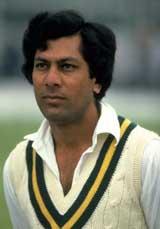










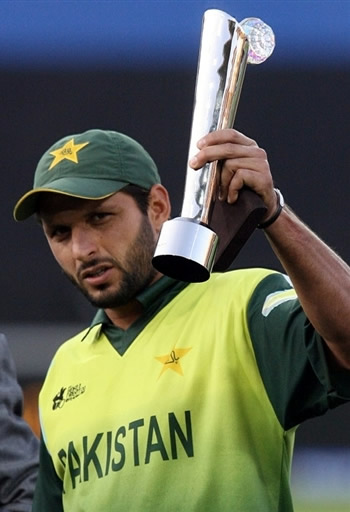









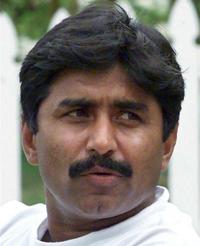


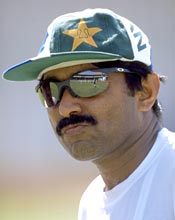


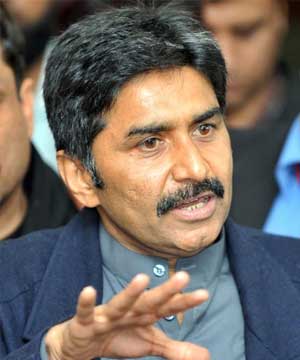




.jpg)



